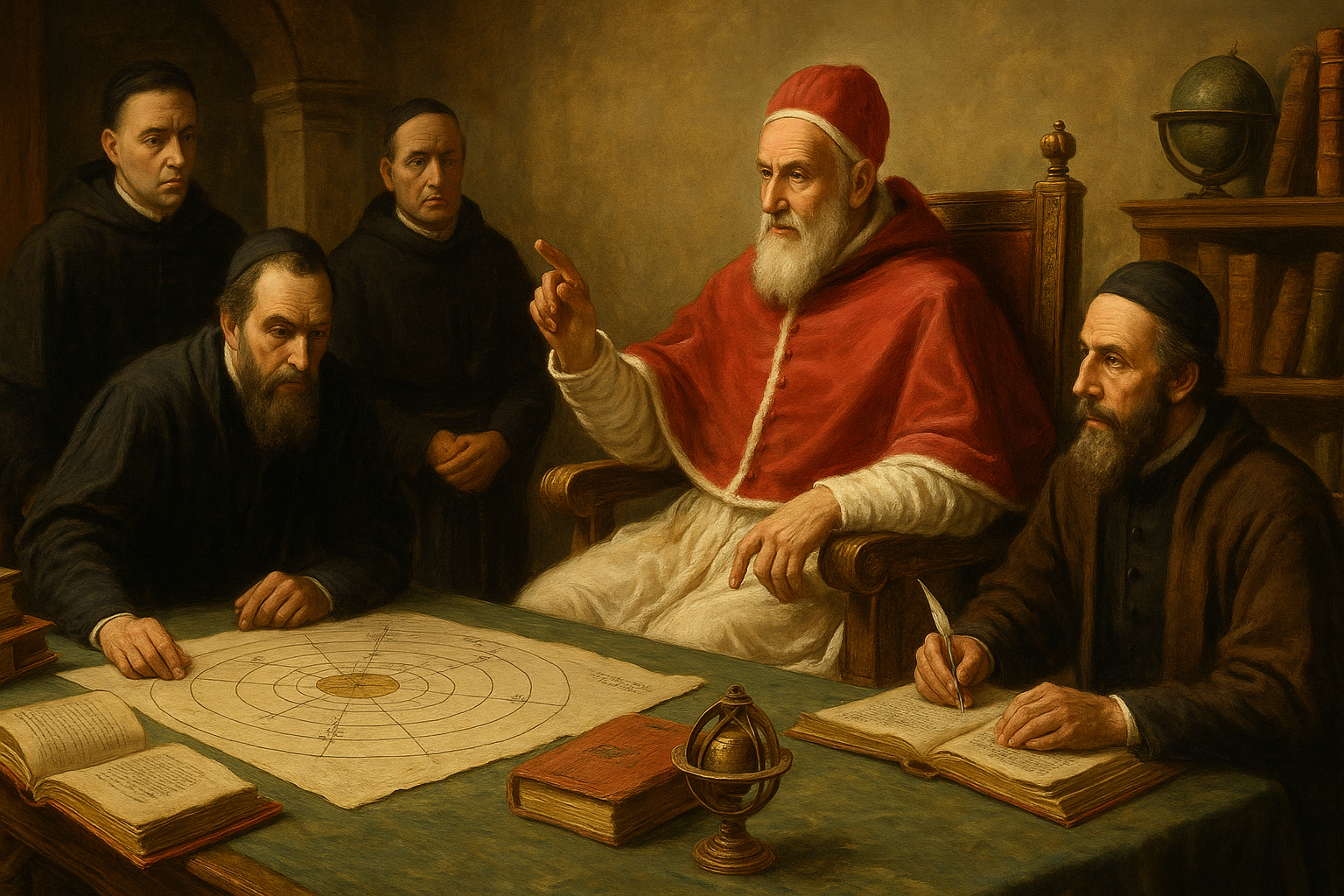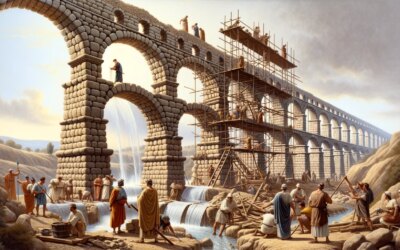When Rome Rewrote the Year
On February 24, 1582, a papal document quietly rewired the way the West kept time. The bull Inter gravissimas, issued by Pope Gregory XIII, ordered a repair to the calendar that Julius Caesar had introduced more than 1,600 years earlier. In October 1582, the fix arrived with theatrical force: in Rome and other Catholic realms, Thursday, October 4 was followed not by the 5th, but by Friday, October 15. Ten dates vanished, church bells rang on cue, and the Eternal City announced that the seasons—and Easter—would once again line up with the sky. :contentReference[oaicite:0]{index=0}
Why the Julian Calendar Drifted
Caesar’s Calendarium of 46 BC was a leap toward solar accuracy: a year of 365¼ days, with a leap day every fourth year. But the true tropical year is about 365 days, 5 hours, 48 minutes, 45 seconds. Those extra eleven-plus minutes in the Julian system compounded to a full day every 128 years. By the sixteenth century the calendar had slipped roughly ten days; the spring equinox, crucial for dating Easter, had wandered from March 21 to about March 11. The calendar still ticked; the heavens didn’t cooperate. :contentReference[oaicite:1]{index=1}
The Architects: Aloysius Lilius and Christopher Clavius
Behind the papal signature stood two minds. Aloysius Lilius (Luigi Lilio), a Calabrian physician-astronomer, proposed the mathematical core: keep the Julian leap day every four years but correct the long-term drift by dropping three leap days every four centuries. Century years would be common years unless divisible by 400. Thus, 1600 and 2000 remained leap years, while 1700, 1800, and 1900 did not. After Lilius’s death, the Jesuit polymath Christopher Clavius refined and defended the plan, writing the authoritative commentary that sold the science to scholars and sovereigns. :contentReference[oaicite:2]{index=2}
How the Fix Worked
Two moves—one immediate, one permanent
First the reform removed ten calendar days to realign dates with the seasons (hence the jump from October 4 to October 15, 1582). Then it installed Lilius’s leap-year rule to prevent future creep: in a 400-year cycle the Gregorian calendar has 97 leap years instead of 100, averaging 365.2425 days—close enough that the residual error will take more than 3,000 years to accumulate into a single day. The reform also recalibrated the lunar tables used to determine the date of Easter, ensuring the feast tracked the full moon after the spring equinox as the Council of Nicaea intended. :contentReference[oaicite:3]{index=3}
October 1582: Ten Days That Vanished
Implementation began where Gregory’s writ ran strongest. In the Papal States, Spain and Portugal (and their Italian and overseas realms), and the Polish-Lithuanian Commonwealth, the change took effect as ordered: the day after October 4, 1582 became October 15. France switched later the same year, mapping December 9 directly to December 20. Across Catholic Europe, notaries, priests, and astronomers annotated registers with the same curious truth: ten days had never happened. :contentReference[oaicite:4]{index=4}
Why Some Lands Waited Centuries
Politics, not astronomy, delayed the reform elsewhere. Protestant principalities balked at a papal directive, adopting the calendar in steps during the 17th and 18th centuries (for example, Britain and its empire in 1752). Orthodox realms waited even longer; Russia changed only after the 1917 revolutions (Old Style January 31 became New Style February 14, 1918), and Greece followed in 1923. By then, the Gregorian calendar had become the civil timescale of a globalizing world. :contentReference[oaicite:5]{index=5}
Rome’s Stagecraft: Managing a Temporal Shock
How do you delete ten days without disorder? In Rome the transition was choreographed. Church feasts moved with the change—St. Francis on October 4, then immediately to the 15th—while civil authorities synchronized contracts and courts. Diaries record bemusement rather than panic; the city’s printers rushed out almanacs explaining why the sun had “leaped.” In a deeply ceremonial society, the pope’s authority turned an abstract correction into a performed event. :contentReference[oaicite:6]{index=6}
Inside the Reform: Numbers, Easter, and Power
Beyond leap years
Gregory’s reform did more than tweak February. It updated the computus, the method for calculating Easter’s date, by revising epacts (lunar ages on January 1) and tables that tracked the synodic month. The aim was fidelity to the Nicene rule—Easter as the first Sunday after the first full moon on or after the equinox—without the slow drift that had blurred the feast’s pastoral and agricultural anchors.
The politics of precision
That a pope led this scientific renovation reveals something essential about Papal Rome in the late Renaissance. The Roman Curia could convene mathematicians, commission tables, and promulgate a standard that crossed borders. If Inter gravissimas was theology in action, it was also early international standard-setting. The new calendar—like coinage, weights, and maps—became a tool of coordination and soft power.
Winners, Losers, and Myths
Merchants and mariners, whose ledgers, charters, and tides ran on precise intervals, gained from the reform’s clarity. Universities folded the rules into their astronomy and law curricula. Not everyone was pleased: in some regions, opponents muttered about “stolen days,” imagining lost rents or shortened lifespans. But the arithmetic of contracts (and the church’s pastoral guidance) quickly normalized expectations. Folklore about riots in Britain when eleven days were “lost” in 1752 persists; historians note the evidence is thinner than legend suggests.
What Changed in Daily Life
For ordinary Romans, little shifted beyond dates on a page. But the reform had subtle effects. Fiscal years moved in some countries; saints’ days and harvest fairs hopped to new notches; astronomical observation became more coordinated. The Jesuit colleges—Rome’s foremost research network—helped broadcast the rules. Clavius’s commentaries became the era’s user manual for time itself, defending the reform against critics with proofs, polemics, and practical examples.
The Global Rollout
Between the 17th and 20th centuries the Gregorian calendar spread with diplomacy, trade, and empire. Japan adopted it in 1873, Egypt in 1875, China (for civil use) in stages from 1912 to the 1920s, Turkey in 1927. Some regions maintain religious calendars for ritual life while using the Gregorian for civil affairs—a duality the reform never sought to erase. By the 21st century, the calendar imagined in Rome had become the world’s default ledger of days. :contentReference[oaicite:7]{index=7}
From the Forum to the Clock: A Roman Legacy
Labeling this a “Roman” story is not mere nostalgia. The reform’s center of gravity—the Apostolic Palace, the Roman College, and the city’s presses—sat within the walls of modern Rome. Its intellectual style blended ancient authority with Renaissance empiricism: Caesar’s calendar repaired by algebra, papal seals affixed to astronomical tables. If aqueducts and roads were the Empire’s hardware, the Gregorian calendar is Rome’s enduring software—synchronizing billions of lives each day.
What the Math Still Means
Ask a programmer, a pilot, or a priest what time it is, and their answers ultimately descend from 1582. The 400-year cycle gives the calendar its drumbeat: no century leap year unless divisible by 400. That keeps average time near the solar year, but not perfectly—there is a residual error of a few dozen seconds per year. Future reformers may adjust by skipping a leap day sometime in the distant millennia. For now, the Gregorian solution remains a masterpiece of practical accuracy.
Rome’s Quiet Revolution in Measurement
We tend to think of revolutions as noisy. The calendar reform was quiet and bureaucratic: a bull, a table, a handful of edicts, and a coordinated turn of the page. Yet its consequences were sweeping. It regularized commerce, steadied ritual, and taught states to cooperate—sometimes grudgingly—under a common standard. In the same city where emperors once marked time with triumphs, a pope and his mathematicians marked it with mathematics.
Key Milestones at a Glance
- Feb 24, 1582: Papal bull Inter gravissimas promulgates the reform. :contentReference[oaicite:8]{index=8}
- Oct 4 → Oct 15, 1582: Ten days dropped in the Papal States, Spain/Portugal and their Italian realms, and Poland-Lithuania; France follows in December. :contentReference[oaicite:9]{index=9}
- 17th–18th c.: Protestant regions adopt gradually; Britain and empire switch in 1752. :contentReference[oaicite:10]{index}
- 1918–1923: Russia, then Greece convert for civil use; by the mid-20th century, the Gregorian calendar is the global civil standard. :contentReference[oaicite:11]{index}
Not a Conclusion—A Daily Practice
Stand in Rome’s historic center when noon tolls and you can feel it: time as an agreed fiction that organizes real lives. The Gregorian calendar reform of 1582 didn’t just correct a mathematical error; it taught societies to coordinate. Every appointment, deadline, and holiday you keep is a faint echo of that October in Rome when ten days disappeared—and the modern world learned to read the sun more precisely.






